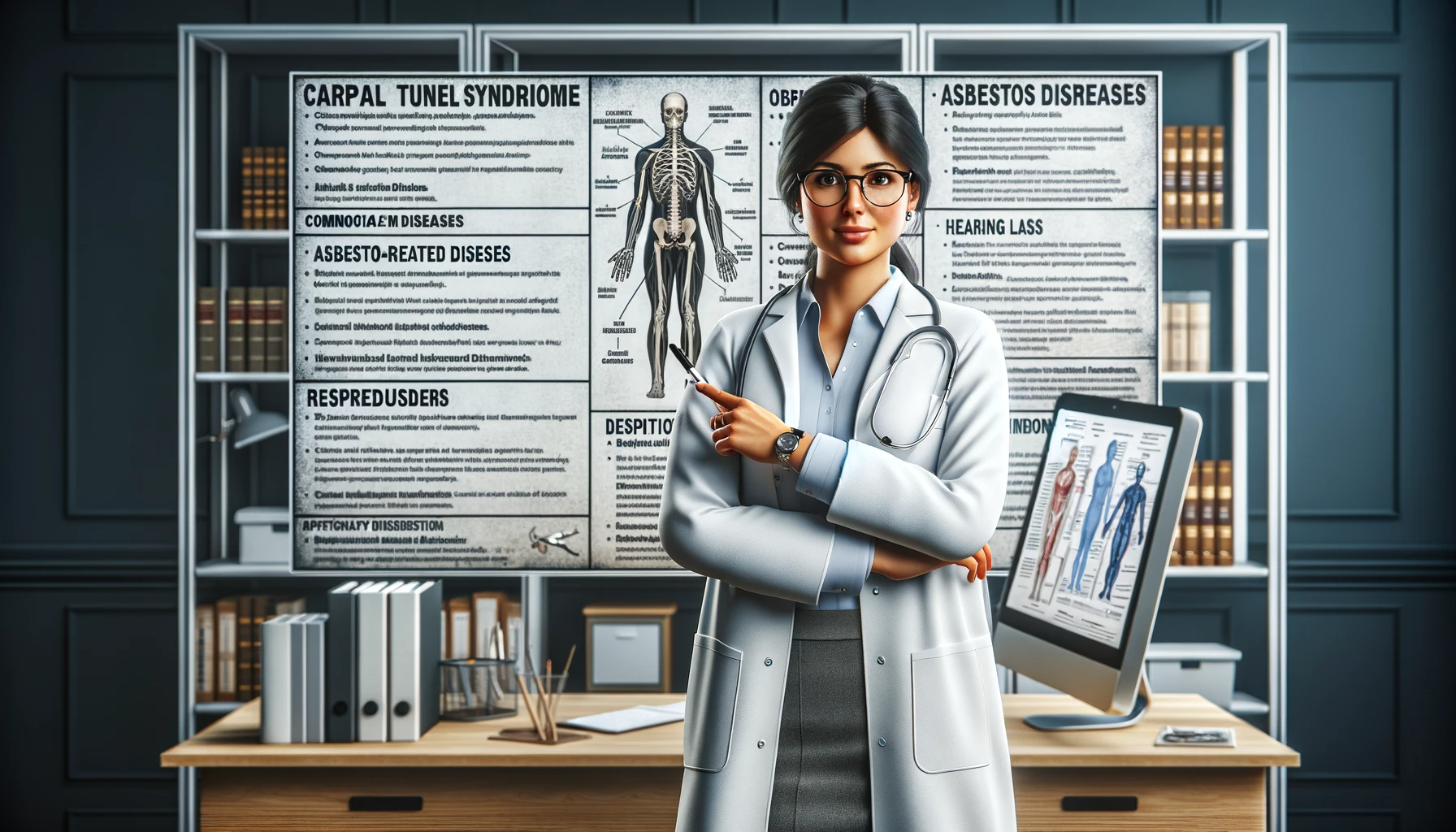Understanding Injuries and Their Impact
Recognizing the Effects of Injuries on the Body
Injuries can have visible effects such as wounds, lacerations, or fractures, as well as non-visible impacts like internal damage or neurological harm. Depending on their severity,
Injuries can also disrupt normal body function, often leading to temporary or permanent impairment. For instance, a spinal injury may result in paralysis, while a severe head injury could cause cognitive or emotional changes.

The Emotional and Psychological Consequences of Injury
Injuries do not only have physical implications. They often carry emotional and psychological repercussions as well. These could include feelings of vulnerability, fear, or anxiety, especially when the injury resulted from a traumatic event. It's also common for individuals to experience stress due to the disruption of daily activities and responsibilities, along with the potential financial burden tied to medical treatment.
Long-term Impact of Chronic Injuries
Chronic injuries, usually caused by overuse or repetitive movement, can gradually wear down tissues and contribute to long-term pain and disability. Examples include tendinitis, carpal tunnel syndrome, or stress fractures. Chronic
injuries can be difficult to manage and may require prolonged treatment and rehabilitation.
The Social Impact of Injuries
The social consequences of injuries are often overlooked but equally significant. Depending on their severity and nature, injuries can lead to isolation, changes in social roles, or even discrimination. This is especially true for severe injuries that lead to visible physical impairments or those that require long-term care. The social impact can further contribute to the emotional distress associated with the injury.
Injury Impact and Quality of Life
The overall impact of an injury can greatly affect an individual's quality of life, influencing their ability to work, study, engage in hobbies, and maintain relationships. Rehabilitation and support services are therefore essential in promoting recovery and helping individuals regain their independence and quality of life.
Acute vs. Chronic Injuries: What's the Difference?
Acute injuries occur suddenly and are typically associated with some form of trauma. They often occur as a result of a specific impact or awkward movement, such as sprains, strains, and fractures. Symptoms can be instant and profound, including sudden severe pain, swelling, inability to place weight on a lower limb, or an arm or leg that turns at an unnatural angle.
Characterizing Chronic Injuries
In contrast to acute injuries, chronic injuries can be subtle and may emerge slowly over time. They are typically the result of overusing one area of the body while playing a sport or exercising over a long period. Examples can include stress fractures, tendonitis, or osteoarthritis. Signs of a chronic injury include pain when performing activities, a dull ache when at rest, and persistent swelling.
Diagnosis and Treatment of Acute Injuries
Acute injuries usually require immediate medical attention. Diagnosis often involves physical examinations, X-rays or other imaging studies. Treatment can range from rest, ice compression, and elevation (RICE), immobilization with braces or splints, to necessary surgery depending on the extent of the injury.
Managing Chronic Injuries
Chronic injuries often require a different approach for treatment. The focus is usually on long-term management rather than immediate recovery. Management strategies can include physiotherapy, modified activity levels, therapeutic exercises, medications, and in some cases, surgery.
Preventing Acute and Chronic Injuries
Prevention is key to both acute and chronic injuries. This includes warming up properly before engaging in physical activities, using the proper equipment, taking time to rest and recover, employing correct techniques in sports and exercises, and maintaining good overall physical conditioning.
Open and Closed Injuries: An Overview
Open and closed injuries represent two key classifications in the realm of injury analysis. Both types come with their own unique sets of signs, symptoms, possible treatments, and potential complications.
Distinguishing Between Open and Closed Injuries
The main difference between open and closed injuries lies in whether the skin is broken or not. An open injury is one where the skin is broken, torn, or cut, often due to violent force or impact. This exposes the inner tissue, bones, or organs, making them vulnerable to external contaminants and infections. Examples include cuts, puncture wounds, abrasions, and avulsions.
On the other hand, a closed injury does not break the skin. Instead, damage occurs beneath the surface, predominantly affecting internal structures like muscles, tendons, ligaments, and bones. Common examples are bruises, sprains, strains, and fractures.
Recognizing Signs and Symptoms
Open
Injuries generally exhibit visible symptoms like bleeding, visible tissue or bone, and a tear or cut in the skin. Pain levels can range from mild to severe depending on the extent of the injury. These injuries also pose a heightened risk for infection.
Closed injuries might be less visually apparent but can be equally if not more serious due to potential internal damage. Symptoms include swelling, discoloration, pain, and impaired function. In severe cases, internal bleeding may occur.
Treatment Approaches
Treatment strategies for open
Injuries aim to stop bleeding, prevent infection, and promote healing. This could involve applying pressure, cleaning the wound, using bandages or stitches, and prescribing antibiotics.
Closed injuries often require rest, elevation, compression, and ice to manage swelling and pain. Serious cases may necessitate medical intervention such as immobilization, physical therapy, or surgery.
Potential Complications
If not properly treated, both open and closed
Injuries can lead to complications. Open injuries may result in infections or delayed healing, while closed injuries can trigger internal bleeding, compartment syndrome, or long-term functional impairment. Early recognition and appropriate management of these injuries are essential to minimize these risks.
Categories of Soft Tissue Injuries
Strains and Sprains
A large chunk of soft tissue injuries falls under the category of strains and sprains. Strains usually affect the muscles or tendons, which link our bones and muscles. Overstretching or overusing these tissues may result in a strain. On the other hand, sprains impact the ligaments that join our bones together, and they generally occur due to a twist or fall.
Contusions
Commonly known as bruises, contusions are another type of soft tissue injury. They arise when a direct blow or blunt force trauma happens to the body, causing capillaries under the skin to break and lead to discolouration. This discolouration is usually visible as it turns the skin purple-blue and even black at times.
Tendinitis and Bursitis
Tendinitis refers to the inflammation or irritation of a tendon, typically caused by repetitive, minor impact on the affected area or from a sudden more serious injury. On the other hand, bursitis is the inflammation or irritation of the bursa, a sac filled with lubricating fluid located between tissues such as bone, muscle, tendons, and skin. Both tendinitis and bursitis often occur in conjunction with each other.
Lacerations and Abrasions
Lacerations and abrasions are two more types of soft tissue injuries. Lacerations involve a deep cut or tearing of the skin, which can often lead to significant bleeding. Abrasions, however, are superficial wounds where only the top layers of the skin are scraped off. Although less severe than lacerations, abrasions can still be quite painful and prone to infection.
Lastly, stress injuries, also known as overuse
Injuries, arise when a specific part of the body is subjected to repeated strain over an extended period. This type of injury is common in athletes and individuals whose activities involve repetitive motions. Stress injuries can affect any part of the body but are most common in the lower limbs.
Categories of Bone and Joint Injuries
Fractures and Their Types
A bone fracture is a medical condition in which there is a damage in the continuity of the bone. They are classified by several attributes, including their complexity, location, and the nature of the fracture line. For instance, simple fractures involve a single break with no damage to the skin, while compound fractures involve a broken bone piercing the skin.
Dislocations and Subluxations
Dislocations and subluxations are joint injuries where there is an abnormal separation in the joint, where two or more bones meet. A complete dislocation means the disjointing is complete with no contact between the joint surfaces, whereas a subluxation refers to a partial dislocation where the joint surfaces still have some contact.
Sprains and Strains
Sprains and strains are common
Injuries that share similar symptoms, but involve different parts of your body. A sprain is a stretching or tearing of ligaments — the tough bands of fibrous tissue that connect two bones together in your joints. A strain, on the other hand, is a stretching or tearing of muscle or tendon, the fibrous cords of tissue that connect muscles to bones.
Stress Fractures
Stress fractures are tiny cracks in a bone caused by repetitive force, often from overuse — such as repeatedly jumping up and down or running long distances. This type of fracture can occur in many bones that are subjected to repetitive activities, including the lower leg and foot bones.
Soft tissue injuries refer to the damages done to the muscles, ligaments, and tendons throughout the body. Common examples include bruises (contusions), sprains, and strains. It's essential to remember that soft tissue injuries can be just as severe as a broken bone, so prompt medical attention is always recommended.
Emotional and Psychological Injury Classifications
1. Trauma-Related Emotional Injuries
Trauma-related emotional injuries result from extremely stressful or traumatic events. These can include situations such as abuse, violence, or a serious accident. The individual often experiences intense fear, helplessness, or horror which can lead to conditions like post-traumatic stress disorder (PTSD), acute stress reaction, and adjustment disorders.
2. Developmental & Relational Psychological Injuries
Developmental and relational psychological injuries typically occur during childhood and can have lasting impacts into adulthood. These types of injuries can result from neglect, physical or sexual abuse, parental substance abuse or severe discord, prolonged or repeated hospitalization, or other complex traumas. They can result in attachment disorders, personality disorders, or other long-term psychological difficulties.
3. Grief-Related Emotional Injuries
Grief-related emotional injuries can occur as a result of the loss of a loved one, whether through death, divorce, or estrangement. The grieving process can lead to symptoms of depression, anxiety, and post-traumatic stress disorder. It's not uncommon for individuals experiencing these types of profound losses to suffer from complicated grief, a condition characterized by prolonged and intense mourning.
4. Performance-Related Psychological Injuries
Performance-related psychological injuries are often observed in high-pressure environments such as schools, workplaces, or athletic organizations. Individuals may suffer from excessive stress, burnout, performance anxiety, or develop conditions like eating disorders and body dysmorphic disorders.
5. Stress-Related Emotional and Psychological Injuries
Stress-related emotional and psychological injuries are often long-term effects of chronic stress. These can manifest as a multitude of conditions including generalized anxiety disorder, somatic symptom disorder, irritable bowel syndrome, and others. Though related to stress, these disorders all feature significant psychological distress and can seriously impede daily functioning.
Prevention and Treatment of Different Injury Types
Preventing Various Types of Injuries
The first step in dealing with injuries is prevention. It's essential to understand the necessary safety precautions for various activities like sports, driving, or even simple daily tasks. For example, wearing protective gear during physical activities, obeying traffic laws, and maintaining a clean, clutter-free environment can significantly decrease your risk of getting injured. Regular exercises that improve strength and flexibility also contribute to preventing injuries.
Tackling Soft Tissue Injuries
Soft tissue injuries such as sprains, strains, and bruises are common and can often be treated at home. RICE (Rest, Ice, Compression, Elevation) therapy is a well-known treatment method for these injuries, which emphasizes minimizing movement, applying cold packs, wrapping the injured area snugly, and elevating it above heart level. Non-prescription pain relievers may also be beneficial. However, if the pain or swelling is severe or persists, professional medical help should be sought.
Managing Skeletal Injuries
Skeletal injuries, including fractures and dislocations, typically require immediate medical attention. Until help arrives, try to keep the injured person calm and immobile to avoid further damage. Over-the-counter pain relievers may offer temporary relief, but do not attempt to realign bones or joints yourself.

Dealing with Skin Injuries
Skin injuries, such as cuts,
Burns, and abrasions, can often be managed at home. The wound should be cleaned immediately with warm water and gentle soap, then covered with a sterile bandage. Over-the-counter antibiotic creams may aid healing and prevent infection. For deep wounds, chemical
Burns, or large areas of skin damage, medical intervention is necessary.
Addressing Head and Spinal Injuries
Head and spinal injuries can be life-threatening and should always be treated as a medical emergency. Symptoms may not appear immediately, hence, any severe blow to the head or back requires immediate medical attention. Drastic movements should be avoided to prevent further injury.
Conclusion
Understanding the classifications of injuries is fundamental for both medical professionals and the general public. From soft tissue injuries to spinal cord injuries, each category requires a unique approach to treatment and recovery. By recognizing the different types of trauma and their potential causes, we can better protect ourselves and improve our chances of a swift recovery.
Look for an attorney who has the right legal resources for your legal needs.
Contact us here on the
Warmuth Law website or through our hotline 888-517-9888.
1. What are the main differences between acute and chronic Injuries?
Acute injuries are sudden and usually associated with a specific event, like twisting an ankle during a run. They often present immediate symptoms such as pain, swelling, and redness. Chronic injuries, however, develop over time and are often related to overuse or repetitive activities. They can be more challenging to diagnose as their symptoms may be less apparent and develop gradually.
Chronic injuries require a different approach to treatment and prevention, often involving changes to activity levels, ergonomic adjustments, or long-term therapy. Recognizing the type of injury is crucial in determining the most effective course of action to avoid further damage and ensure proper healing.
2. How do healthcare professionals grade the severity of Injuries?
Healthcare professionals use various grading systems to assess injury severity. These systems consider factors like the depth and size of the wound, the extent of tissue damage, and the injury's impact on bodily functions. For example, the Glasgow Coma Scale is used to grade the severity of head injuries, while other scales may be used for
Burns or fractures.
The grading of an injury helps determine the urgency of care and the appropriate treatment plan. It's a critical step in ensuring patients receive the necessary attention and resources for optimal recovery.
3. Can wearing protective gear really help prevent Injuries?
Absolutely! Protective gear is designed to absorb impact, reduce the risk of cuts, and support the body during activities. Helmets, for instance, are crucial for preventing head injuries while cycling or playing contact sports. Similarly, knee pads, wrist guards, and proper footwear can protect against common injuries in various sports and occupations.
While protective gear can't prevent all injuries, it significantly reduces the risk and severity of harm. It's a simple yet effective way to stay safe, especially during activities known for higher injury rates.
4. What are some common treatments for soft tissue Injuries?
Soft tissue injuries, such as sprains and strains, are often treated with the R.I.C.E. method—Rest, Ice, Compression, and Elevation—to reduce swelling and speed up recovery. Physical therapy may also be recommended to restore strength and flexibility. In more severe cases, surgery might be required to repair damaged tissues.
Treatment plans should always be tailored to the individual's needs and the specific injury. A healthcare provider can offer the best advice on managing a soft tissue injury and preventing future occurrences.
5. Why is it important to understand the different types of injuries?
Understanding the different types of injuries is crucial for several reasons. It helps individuals identify the severity of an injury and seek appropriate medical attention. It also aids in the prevention of further harm by recognizing activities or behaviors that may lead to injury. For healthcare professionals, it ensures accurate diagnosis and effective treatment plans.













